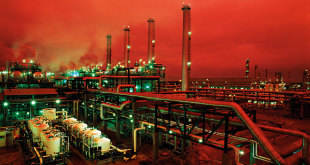China, the Fed and commodity prices –specifically oil and natural gas– will continue to be the ultimate macro-arbiters of global asset prices. To understand how the three are related, let’s go back some 50 years and pick up the story of modern global capital flows:
Before the 20th century, the value of money was tied to gold. Banks that lent money were constrained by the amount of their gold reserves. The Bretton Woods Agreement of 1944 established a system of exchange rates that allowed governments to sell their gold to the U.S. Treasury. But in 1971, U.S. President Richard Nixon took the country off the gold standard, which formally ended the linkage between the world’s major currencies and gold.
At the same time, the U.S. negotiated a deal with Saudi Arabia whereby in exchange for arms and protection, the Saudis would denominate all future sales of oil in U.S. dollars. Other OPEC members agreed to similar deals and the U.S. “petrodollar” was born.
This result has been the basis of the global monetary system, with petrodollars serving as the foundation of global liquidity and driving an enormous global distribution of wealth, or as Izzy Kaminska of the FT writes, “A form of underwriting by the richest state in the world, which has increased global interconnectedness, global trade and global growth in general.”
It’s been the definition of a virtuous cycle. Petrodollar rich countries –commodity exporters– invest in emerging market growth projects, which in turn, stimulate additional demand for commodities. The positive feedback loop of globalization has grown both foreign reserves in emerging markets and global sovereign wealth fund assets – now well over $7 Trillion, with +$1T having found its way into US securities.
And now, as the price of oil has collapsed, the cycle is slamming into reverse.
From Citi:
The most important consequence of the disappearance of the oil exporters’ surplus is that it would accelerate the withdrawal of Petrodollars and likely put further downward pressure on capital flows to EM.
From what we can see of Petrodollars in the official data, the withdrawal of this liquidity could get considerably worse. This is illustrated in… data from the US Treasury and from the BIS….showing that major oil exporters still – at least up until September last year – had US$1 trillion of exposure to US securities, and that number had remained remarkably stable in the previous 18 months, despite the collapse in oil prices. As oil prices stay low and these countries experience current account deficits, it seems fairly certain that there will be a withdrawal of liquidity from US securities markets, with negative consequences for global risk appetite.The IIF’s January 2016 analysis suggests that SWFs funded by commodity revenues (almost entirely oil and gas) may have reduced their direct exposure to EM assets from US$600 bn at the end of 2014 to some US$550bn last month. This is based on their estimate that some 15% of commodity-financed SWFs had been invested in EM. We assume that this direct exposure of Petrodollars to EM is also at risk.
So not only are SWFs likely to increase redemptions of their $1T in direct U.S. exposure, but declining petrodollars and corresponding net capital flow reversals are also reducing EM GDP growth rates, making it far more difficult for EM companies to service their $23.7T in corporate debt (up from $5T 10 years ago), of which $16.7T is China.
And finally we get to the bottom-line, debt. The world is awash in more than $200T in total debt, up as much as $60T from 2007 levels. (China itself has an estimated $28T in total debt, at least $10T of which is believed to be USD denominated.)
What’s China’s role in this? Ultimately it’s increasing the probability for global debt default — and anything that puts substantial quantities of debt at risk should immediately be the bull’s greatest fear.
Over the month of December, China spent an estimated $170B in net reserves (including monthly trade imbalance) –and again according to IIF, perhaps as much as $676B gross over the last 12 months– defending the yuan. Of its +$3T in remaining reserves, it’s estimated that only $300B remains truly available, leading to speculation that China will be forced to let its currency fall, with estimates ranging from 10-50%. While devaluatuon might help with local inflation, ease real local debt loads and cushion exporter income, a lower yuan will ultimately increase pressure on other EM countries to also devalue.
Combined, China’s projected currency depreciation and slowing economy represents a dual-hit to EM countries, simultaneously slowing export growth (i.e. commodities like iron and copper) while threatening export margins of products sold into developed markets. As stated above, this increases the probability for EM corporate (and government?) debt default.
Meanwhile, the Fed feels compelled to tighten, despite underwhelming recent US economic data. Why? The Fed is deeply concerned about what will happen to holders of the $23T in global government debt (read: both banks and shadow bank actors) presently trading at interest rates of less than 1%. CPI has perked up the last several months, even with massive declines in energy. The Fed knows that if it gets too far behind the inflation curve and has to raise too rapidly, the resulting credit market dislocation will be severe, increasing the probability for (yet) another global financial crisis.
By the way, if you’re at all curious as to why Deutsche Bank stock is collapsing, it may be because they –and their +$70T derivative book– represent substantial counter party risk for god-only-knows how many institutional hedges, that may (or may not) be good when they are most needed. (This is the role AIG played during the 2008 financial crisis, acting as the primary seed to financial contagion.)
Despite this, I’m not a bear; I think the odds are good we get through this in one piece. That said, there are a number of triggers out there. If things go the wrong way, the resulting crisis has the potential to take place on a truly massive scale.
Until oil and China stabilize, risk remains high.
-g
If you enjoy the content at iBankCoin, please follow us on Twitter




